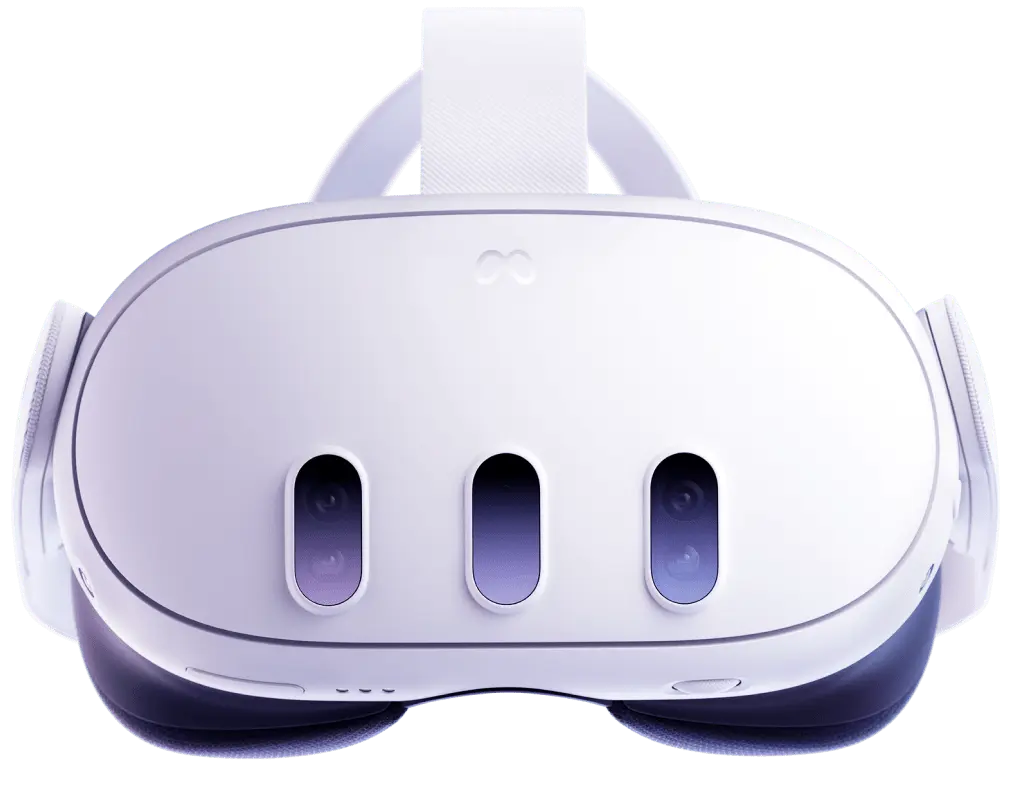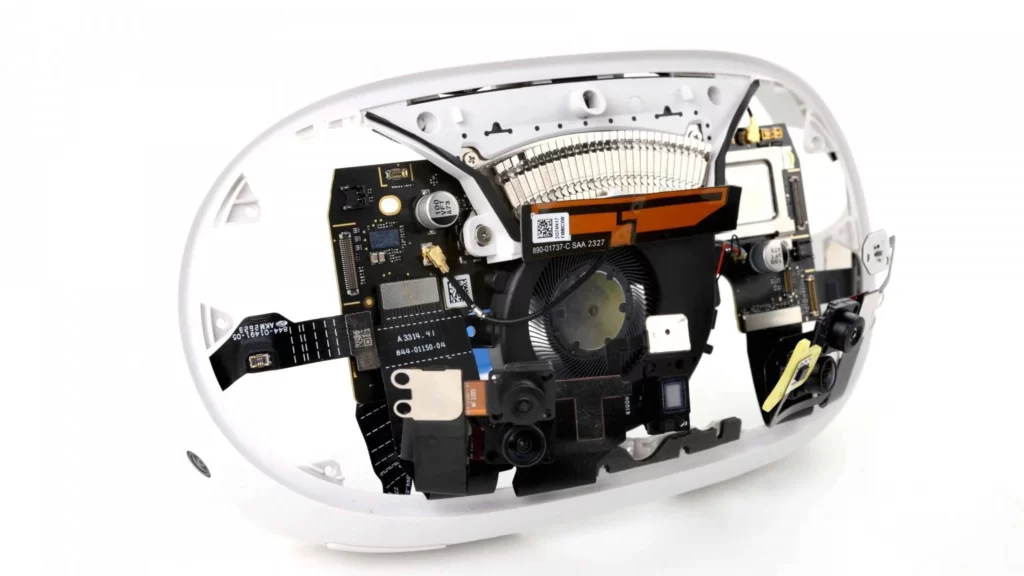The world of virtual reality has been evolving at a breakneck speed, and the latest addition to the Meta Quest family, the Quest 3, is causing quite a stir in the tech world. Thanks to a tear down by iFixit, we now have a closer look at what makes the Quest 3 tick.

Quest 3 vs. Quest Pro:
The Quest 3 is making waves with its mixed-reality capabilities, surpassing its predecessor, the Quest Pro. It can automatically map out a room and accurately measure distances between objects without requiring a “safe space.” This leap in functionality is attributed to a depth sensor and a time-of-flight sensor. Interestingly, iFixit points out that these time-of-flight components could have found in the Quest Pro, suggesting that their omission might have been a matter of cost and weight, as explained by Meta’s Chief Technology Officer, Andrew Bosworth.
The Quest 3’s weighs about 512 grams, combined with the improved mixed-reality features, makes it an intriguing upgrade over the Quest Pro.
Inside the Meta Quest 3
The Meta Quest 3 iFixit teardown reveals some key details about the Quest 3’s internal components. The device boasts a resolution of 2064 x 2208 pixels per eye and a refresh rate of 120Hz. Where as Quest Pro’s peak resolution has of 1920 x 1800 pixels.

The Quest 3 utilizes LCD panels and a time-of-flight sensor to create a more vibrant and immersive full-color passthrough experience and powerful Qualcomm Snapdragon 8 XR2 Gen 2 chipset.
Repairability: The Good and the Not-So-Good
While the Meta Quest 3 excels in terms of performance and mixed-reality capabilities, it has its quirks when it comes to repairability. The controllers are relatively straightforward to repair, held together by screws, a magnet, and ribbon cables. Replacing the battery is also a hassle-free process, as it only requires a single AA battery for each half.
On the headset itself, the story is a bit different. The central location of the battery, behind a multitude of components, including 50 screws, coax cables, connectors, a heatsink, and the mainboard, makes DIY repairs a time-consuming task.
In comparison to its predecessor, the Quest Pro, the Quest 3 is more repairable, but it still poses challenges due to the complex layering of components and the time-consuming process of accessing the battery.
The Future of VR
The Quest 3 had an impressive mixed-reality capabilities and competitive pricing make it a best option.

In the ever-evolving landscape of VR, the Meta Quest 3 has demonstrated that it’s not just about what’s inside a device but also how that technology enhances the user experience. As we look ahead, we can only imagine the exciting innovations that will shape the next generation of virtual reality.
Price and availability
The Meta Quest 3 is currently available for $499 USD for the 128GB variant and $649.99 USD for the 512GB variant, both of which come with a one-year warranty. – Buy Now

